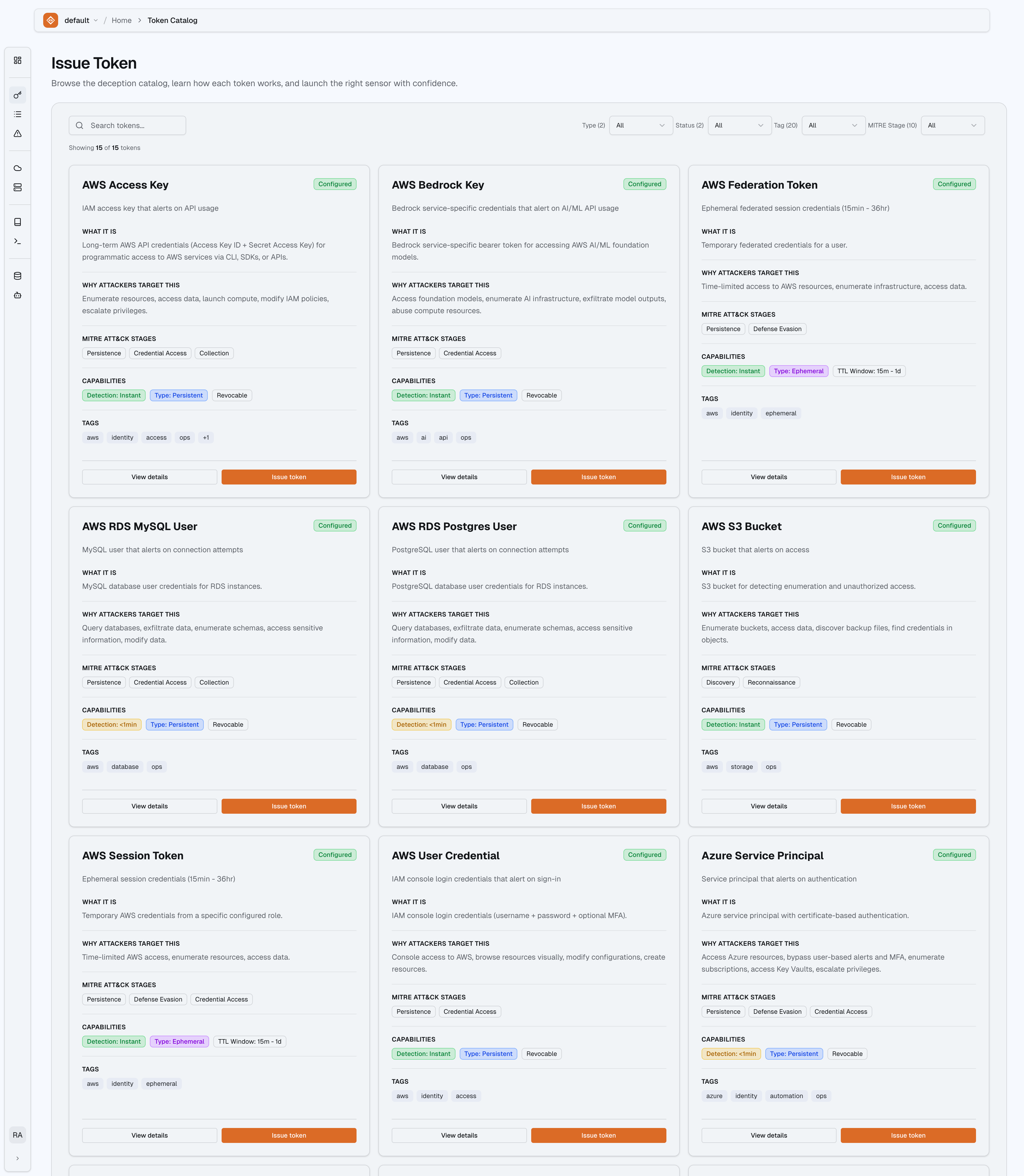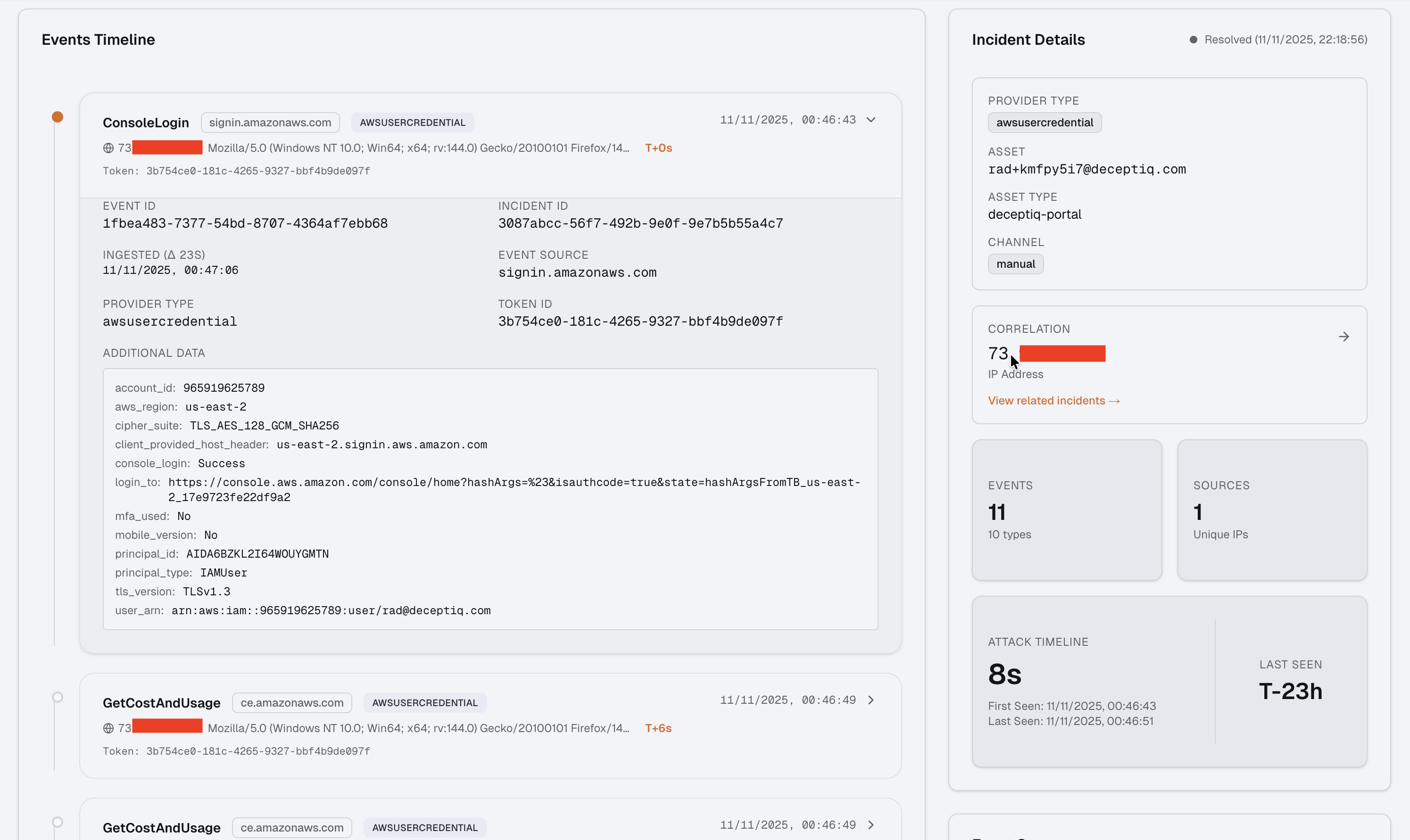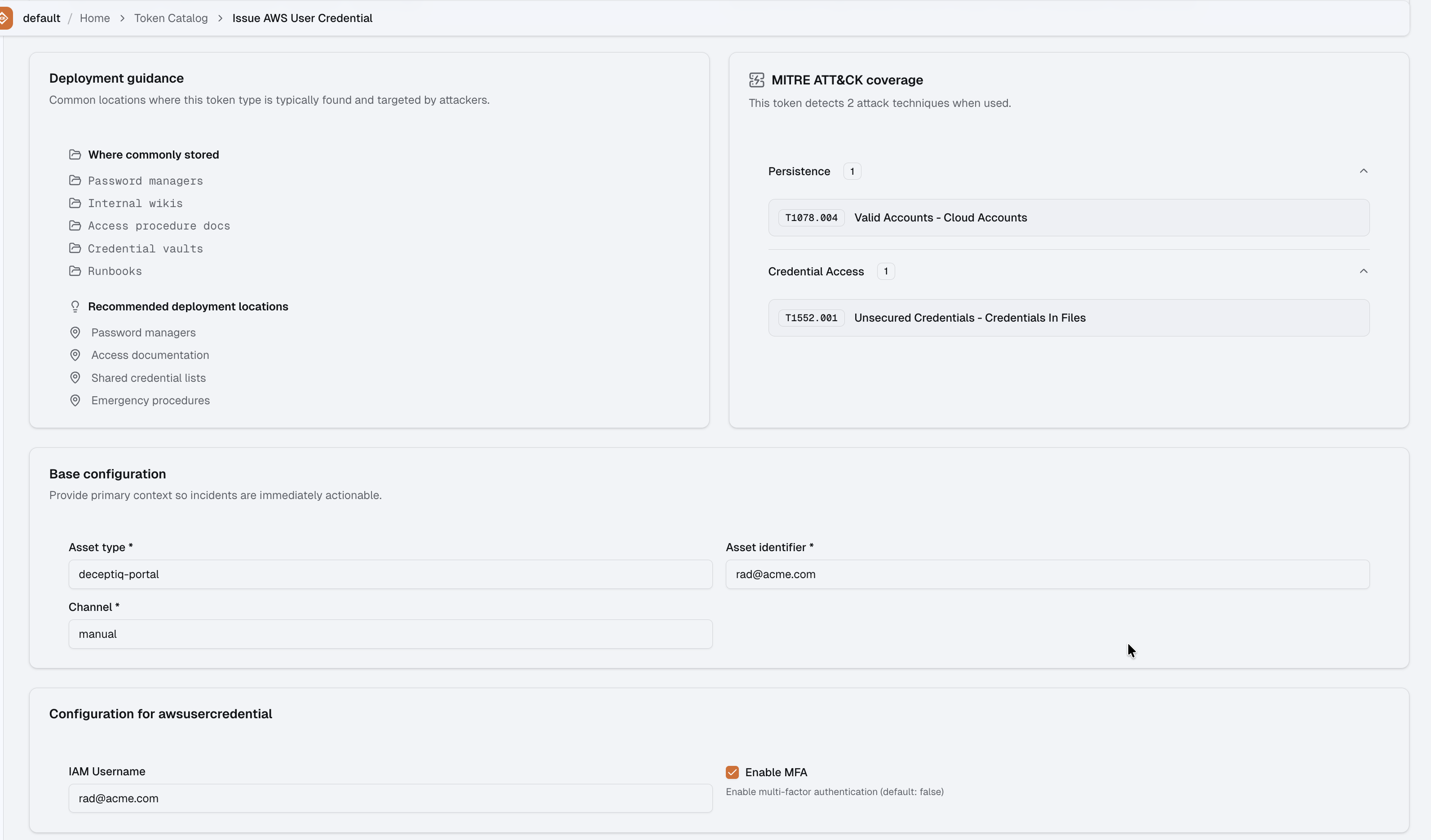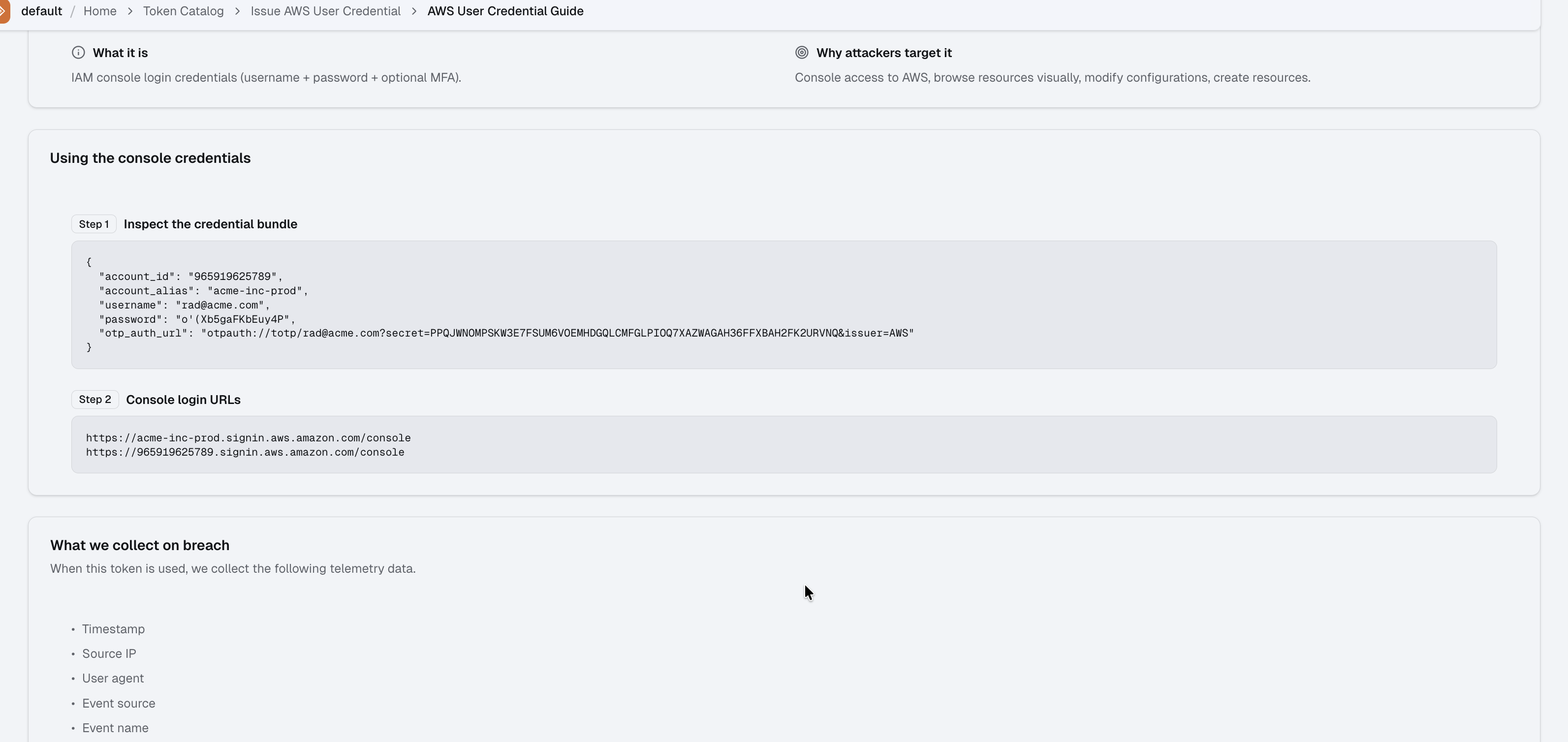Early Warning Honey Tokens: Give Adversaries Options
The Early Warning Advantage
As a former red teamer, I was always looking for low-risk, high-reward decisions. Actions where the upside-lateral movement, privilege escalation, access to sensitive data-outweighed the likelihood of detection. Validate a credential? Near-zero risk if handled carefully, massive reward if it grants access.
This risk calculus has held for years. Early warning honey tokens exist to break it.
The Market Maker Dynamic
You plant monitored credentials throughout your environment. Adversaries enumerate and find them alongside legitimate credentials. They choose which to validate.
You're the market maker. You create liquidity-the volume and diversity of credentials available. You set bid-ask spreads through how authentic your tokens appear relative to real credentials. You decide market depth by controlling how many tokens exist and where they're placed.
The adversary is the taker. They execute against your liquidity. Every credential validation is a transaction. When they validate your token, you profit: immediate alert, definitive breach indicator, detection before lateral movement.
Market makers profit from information asymmetry. You know which credentials are yours. They don't. You know validation triggers detection. They don't. You can sustain infinite transactions at zero cost. They can't-a single transaction with your tokens ends their operation or forces them to burn access and start over.
The quality of your market matters. If you only offer one type of credential at scale, pattern recognition destroys the illusion. An exchange trading only one security at a thousand different price points looks manipulated. Diversity creates legitimacy. Different credential types, different contexts, different apparent purposes-this is what normal infrastructure looks like during enumeration.
When adversaries find a heterogeneous mix during reconnaissance, individual credentials blend into the landscape. Each validation decision appears reasonable in isolation. They pick one. Alert fires.
The probability model favors defenders if-and only if-token quality is high and distribution is strategic. Low-quality tokens get recognized and avoided. Poorly distributed tokens never get found. But high-fidelity tokens placed in realistic locations create genuine decision paralysis for adversaries.
Insurance Against Breach
Insurance exchanges predictable premiums for catastrophic protection. The premium is affordable. The payout is massive. The insurer profits by spreading risk across many policies, collecting from all, paying out to few.
Honey tokens invert this model. You're the insurer, but you want claims. Each claim-each token validation-is your desired outcome, not your feared expense.
The premium is deployment: initial token creation, placement strategy, integration with detection infrastructure, ongoing lifecycle management. This cost is real and non-trivial. Token quality degrades over time as infrastructure evolves. Placement becomes stale. Alert fatigue sets in if tokens aren't maintained.
But the premium is fixed. Deploy once, maintain periodically, and coverage is continuous. Every minute an adversary operates in your environment, your coverage is active. The payout comes not in dollars but in time-early warning detection in seconds rather than weeks or months. Breach containment before data exfiltration. Incident response triggered at initial access rather than after full compromise.
The asymmetry: your costs are bounded and predictable. Their mistake ends operations. Your investment persists as long as you maintain it. Their error is unrecoverable without burning access and starting reconnaissance from scratch.
This assumes competent incident response. Detection without response is noise. The token tells you someone is there. Your security organization determines what happens next.
Changing Adversary Behavior
Right now, credential validation is low risk for adversaries. Test everything they find. The upside is substantial-access to systems, data, privilege escalation. The downside is minimal-failed authentication attempts rarely trigger alerts, and when they do, they're lost in authentication noise.
This behavior is rational. Defenders have made it rational by failing to make validation risky.
Honey tokens shift the risk profile. Every credential validation might terminate operations. The adversary faces new trade-offs: validate and risk detection, or operate without validation and waste effort on dead credentials.
Both choices degrade effectiveness. Validate everything-high detection probability. Validate nothing-operational friction, time wasted on credentials that don't work. Validate selectively-reduces but doesn't eliminate risk, and introduces analysis paralysis.
The degree of behavioral change depends on token prevalence and adversary sophistication. If honey tokens are rare, adversaries learn to accept the low probability of detection. If tokens are ubiquitous but low quality, adversaries learn to recognize and avoid them. The equilibrium point-high enough prevalence to create genuine risk, high enough quality to resist detection-is difficult to achieve and maintain.
Sophisticated adversaries adapt. They might test credentials against low-value systems first to gauge detection capabilities. They might perform timing analysis on authentication attempts to identify honeypots. They might correlate credential locations with infrastructure context to assess legitimacy. They might simply accept the detection risk as cost of operations.
Your goal isn't to stop all credential validation. It's to make validation costly enough that adversaries must think carefully about each attempt. Hesitation slows operations. Caution reduces aggression. Even marginal friction compounds over time. And when they do validate-early warning before they move laterally.
The Attack Is The Alert
Traditional detection relies on inference. Observe behavior, compare to baseline, alert on deviation. This model produces false positives because legitimate behavior sometimes deviates from baselines.
Honey tokens eliminate inference. Credential validation is the indicator. There's no behavior to baseline, no threshold to tune. Someone attempted authentication with a credential that should never be used. That's your signal. Early warning at the point of credential validation, before any damage.
This doesn't mean zero false positives. Legitimate administrators might stumble on tokens during maintenance. Automated tooling might ingest credentials unintentionally. Documentation might expose tokens. But the false positive rate is structurally lower than behavioral detection because the signal is explicit action rather than statistical anomaly.
The model breaks down if tokens aren't genuinely isolated. If tokens authenticate to production systems, false positives spike. If tokens exist in locations where legitimate discovery is likely, alert fatigue sets in. If response procedures aren't mature, detection becomes meaningless.
Token hygiene matters. Authentication targets must be monitored but isolated. Placement must be strategic-realistic enough to be found, isolated enough to be suspicious when used. Lifecycle management must be rigorous-tokens that persist after infrastructure changes become liabilities.
You're not adding security. You're adding visibility. The security comes from what you do after the alert fires.
Why Markets Fail
Market makers don't succeed by offering one security type. They build depth through diversity-different credential types, different expiration windows, different contexts. When adversaries enumerate, they need to find what looks like legitimate credential sprawl, not a pattern they can recognize and avoid.
This requires scale. Not scale for coverage, but scale for diversity. Thousands of tokens across varied provider configurations. AWS access keys from different accounts. Federation tokens with different expiration windows. ECR tokens from separate registries. Each credential originating from isolated infrastructure adversaries can't correlate.
Your market only works if tokens are indistinguishable at the point of discovery and your response to validation is faster than their operational tempo. If they can fingerprint your tokens, they route around them. If they can validate and pivot before you respond, detection becomes forensics.
The market maker metaphor breaks down when you can't actually build the market. Token generation at scale. Isolated providers that prevent fingerprinting. Lifecycle management across ephemeral and persistent credentials. Programmatic deployment into dynamic infrastructure. Real-time monitoring and alerting.
DeceptIQ: Building Your Market
DeceptIQ solves this. We built and maintain the infrastructure for early warning detection at scale-token generation infrastructure, isolated providers that prevent fingerprinting, lifecycle management across ephemeral and persistent credentials, programmatic deployment into dynamic infrastructure, real-time monitoring and alerting. This is the operational burden that prevents adoption.
We maintain a comprehensive token library spanning credential types adversaries actually target during enumeration. Persistent tokens for static infrastructure. Ephemeral tokens for dynamic workloads. Each token type designed by former red teamers who've exploited these exact credentials in production environments.

Token catalog spanning 15+ credential types across AWS, Azure, identity systems, databases, and security tools. Each token type includes configurable capabilities, attack stage targeting, and lifecycle management options.
AWS access keys that trigger on any API call. Console credentials that alert on sign-in attempts. Federation tokens with configurable expiration windows from 15 minutes to 36 hours. ECR tokens with 12-hour lifespans matching legitimate container registry authentication patterns. SSH private keys. RDS database users. Azure service principals. CrowdStrike API keys. S3 buckets. Presigned URLs. Web clone tokens. And more.
Every token deploys from isolated infrastructure we manage. AWS credentials originate from thousands of accounts across different organizations. Federation tokens generate from distributed provider configurations. ECR tokens authenticate against separate registries. No shared infrastructure to fingerprint. No correlation possible across token populations. Each credential appears legitimate because it originates from genuine provider infrastructure-infrastructure we monitor.
The platform handles lifecycle management automatically. Tokens that should expire do expire. Rotation happens programmatically. Stale tokens get flagged. The operational burden of keeping tokens current as infrastructure evolves-that's on us, not you.
Integration and automation solve the deployment problem. Our API enables programmatic token issuance at scale. Kubernetes operators deploy ephemeral tokens into pods automatically. CI/CD pipelines inject tokens into build environments. MDM platforms distribute tokens to endpoints.

Unified API endpoint for programmatic token issuance across all token types
The automation matches infrastructure velocity-generate millions of tokens daily if your deployment demands it.
Each token carries rich metadata you define. Namespace by team, environment, or purpose. Track deployment location and context. When validation occurs, you get timestamp, source IP, authentication details, full context. Events correlate automatically into incidents. Investigation starts immediately with complete information.

Automatic correlation of token validations into incidents with full relationship mapping

Detailed events timeline with full authentication context and telemetry data

Related incidents view showing correlation across multiple token validations
Placement strategy remains your decision. Where tokens live, how they're distributed across your environment, which credential types match your infrastructure-this requires understanding your threat model and architecture. DeceptIQ provides the automation to execute your strategy at scale. You get market maker positioning without infrastructure maintenance burden.
What we don't solve: incident response maturity, adversary adaptation over time, the arms race that follows initial deployment. Detection is the beginning. What happens after the alert fires depends on your security organization's capability to respond faster than adversaries can pivot.
Expiration Dates
Options have expiration dates. So do credentials. DeceptIQ's token architecture reflects this through persistent and ephemeral categories-each serving different infrastructure contexts and adversary behaviors.

Token activity view showing persistent and ephemeral tokens with lifecycle status
Persistent tokens are long-dated options. AWS access keys don't expire by default. They sit in repositories, documentation, configuration files. Once deployed, coverage is continuous until rotation. Adversaries who enumerate and stockpile credentials face accumulated detection probability across their entire operation timeline.
AWS console credentials follow the same model. Long-lived, persistent, waiting in password managers and internal wikis. Any validation attempt-sign-in, API call, resource enumeration-triggers immediate alert. These tokens create sustained risk for adversaries operating over extended timeframes.
Ephemeral tokens are short-dated options. AWS federation tokens expire between 15 minutes and 36 hours. ECR tokens expire in 12 hours. These credentials exist in dynamic infrastructure-containers, Lambda functions, CI/CD pipelines that spin up, grant temporary access, then terminate.

Token detail showing expiration status and lifecycle metadata

Token lifecycle visualization showing creation, expiration, and incident generation over time
The expiration creates urgency. Adversaries in fast-moving environments need immediate validation. Container escapes, CI/CD compromise, ephemeral workload exploitation-all demand quick credential verification before the window closes. This urgency makes ephemeral tokens attractive targets precisely because they're time-limited.
You architect a term structure across your infrastructure. Short-dated options in dynamic environments where credential expiration is normal. Long-dated options in static infrastructure where persistence is expected. The mix reflects legitimate credential lifecycle management. Adversaries can't distinguish your tokens from real temporary credentials or real persistent access keys.
Federation tokens in application memory appear identical to legitimate AWS STS credentials. ECR tokens in container build pipelines match the 12-hour authentication window that's standard for registry access. The expiration isn't suspicious-it's expected infrastructure behavior.
Scale Enables Diversity
Market makers succeed through volume. But scale without quality is just noise. The goal isn't millions of identical tokens-it's millions of diverse tokens across varied provider configurations.
DeceptIQ's infrastructure enables both. Each provider can generate over 25 million tokens daily. For a single tenant, this means scale well beyond what most organizations will ever need. We built for this from day one.

Token deployment guidance showing customization options and recommended placement strategies

Detailed usage guide for each token type with deployment examples
But scale serves diversity, not just coverage. Millions of tokens means you can match the heterogeneity of real infrastructure across different contexts and configurations.
Adversaries during enumeration find what looks like normal credential sprawl. Some AWS access keys. Some console credentials. Some ephemeral federation tokens in container environments. Each token type distributed across appropriate locations. The diversity makes individual tokens unremarkable. Pattern recognition fails because there's no consistent pattern to recognize.
This is where scale becomes strategy. Not because more tokens automatically improve detection-they don't. But because scale enables the diversity required for tokens to blend into legitimate infrastructure. And diversity makes tokens indistinguishable from real credentials at the point of discovery.
Coverage That Matches Your Infrastructure

Distribution of incidents by provider type and tokens by asset type, showing comprehensive coverage
The platform supports 15+ token types across cloud providers, identity systems, databases, and security tools. Coverage spans persistent credentials for static infrastructure and ephemeral tokens for dynamic workloads. If adversaries target it during enumeration, we have a monitored token type for it.
New token types ship continuously. Our roadmap is driven by adversary behavior-of which we have a unique understanding as former red teamers.
You define placement strategy and DeceptIQ provides the automation to execute at scale. The platform handles generation, isolation, lifecycle management, monitoring, and alerting. You focus on where tokens should exist to match adversary targeting. We handle making those tokens exist and triggering alerts when they're validated.
The market favors the maker. Especially when the maker focuses on strategy while the infrastructure operates automatically.
Early warning detection. Deploy honey tokens that trigger alerts on validation and catch adversaries before they pivot deeper.
Book a demo or email us at hey@deceptiq.com
Want more insights like this?
Related Articles
DeceptIQ: High-Fidelity Detection at Cloud Scale
Built by red teamers to catch adversaries. The deception technology platform we wish every organization we compromised had in place.
Rethinking Deception: Why We're Moving from Product to Enablement
After years of building deception technology and watching SOC teams struggle with yet another dashboard, we've made a fundamental shift in how we deliver cyber deception.
AWS Honey Tokens: The Good, the Bad, and the Ugly
Explore the dual nature of AWS honey tokens, powerful tools for detecting attackers but with hidden risks. This deep dive covers their benefits, technical flaws, and real-world implications.